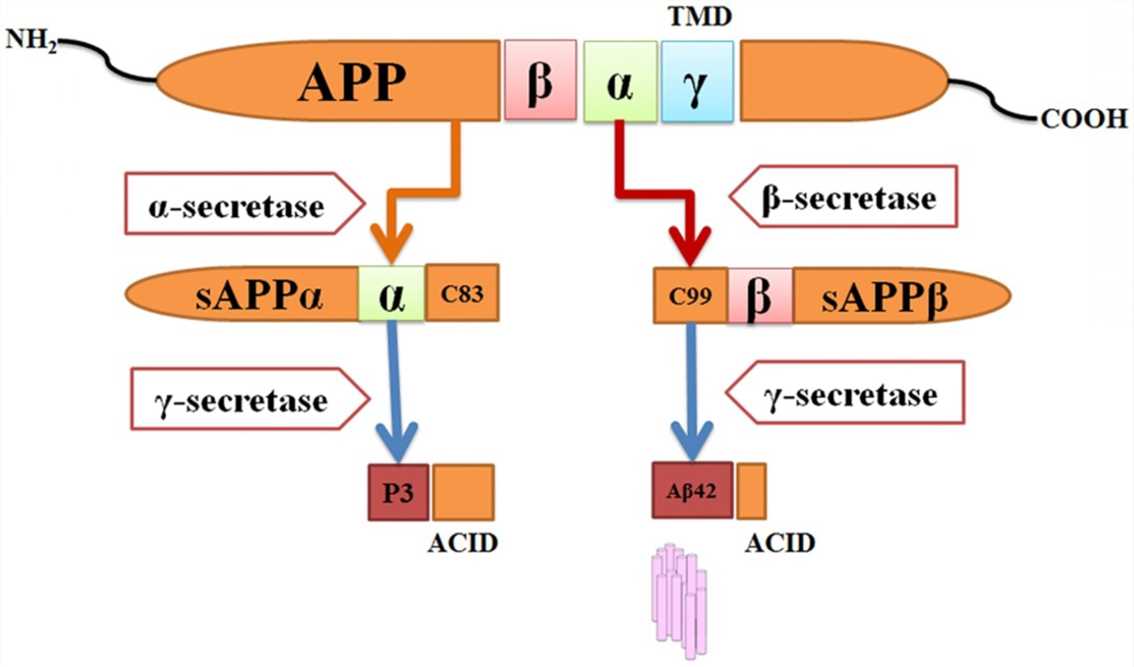In the amyloidogenic pathway, the amyloid precursor protein (APP) is cleaved by β-secretase, a proteolytic enzyme identified as β-site APP cleaving enzyme (BACE) or BACE1 (for distinction from its homologue BACE2). BACE1 is a type I membrane-anchored aspartic protease responsible for the first step of proteolysis of APP and was identified in 1999. BACE1 cleaves near the N-terminus of the Aβ domain of APP to generate secreted APPβ (sAPPβ) and a membrane-bound C-terminal fragment (C99) containing the entire Aβ domain, which is a direct precursor of Aβ. Therefore, BACE1 is a potential target for preventing or treating Alzheimer’s Disease (AD) by reducing Aβ production.

Figure 1. Amyloidogenic process of APP hypothesis and formation of Aβ42. (Chaudhary A.; et al. Current therapeutic targets for Alzheimer’s Disease. Journal of Biomedicine. 2018, 3: 74-84.)
Reasons and Advantages of BACE1 as the Target of AD
Current Situation and Challenges of BACE1 as the Target of AD
Among the anti-amyloid candidates identified in the recent AD pipeline, agents with the mechanism of action centered in the activity of BACE1 or γ-secretase cover nearly 40% of the total. In addition, BACE1 becomes the favored target in the pursuit of Aβ-centered therapeutics after the significant failure of early γ-secretase-based drug candidates.
Challenges in the design of BACE1 inhibitors:
Nevertheless, researchers have made impressive efforts to develop effective and specific BACE1 inhibitors. For example, peptidomimetics, small molecules and fragment-based BACE1 Inhibitors (including acyl-guanidine-based inhibitors, 2-aminopyridine-based inhibitors, aminothiazine- and aminooxazoline-based inhibitors, aminoimidazole-based inhibitors, as well as iminothiadiazinane dioxide-based inhibitors).
Development Strategy and Focus
Currently, available information indicates that the inhibition of BACE1 can serve as a safe and effective target for Aβ reduction. Alzheimacy pays attention to BACE1 as a target for a disease modifying therapy (DMT) for AD. R&D strategies are as follows:
Alzheimacy is concerned with the BACE1 small molecule inhibitor because of its good bioavailability and blood-brain barrier penetration. Not only do we have to explore potency and PK properties, but we also conduct selectivity studies to find compounds with high selectivity to BACE1.
In addition, as a prerequisite for evaluating, preventing or compensating for the potential adverse effects of BACE1 inhibition, we hope to improve understanding of the biology of BACE1 and the relationship between BACE1 inhibition, Aβ levels, and AD cognitive deficits through basic research. If you are interested in this and looking forward to technical support, please feel free to contact us.